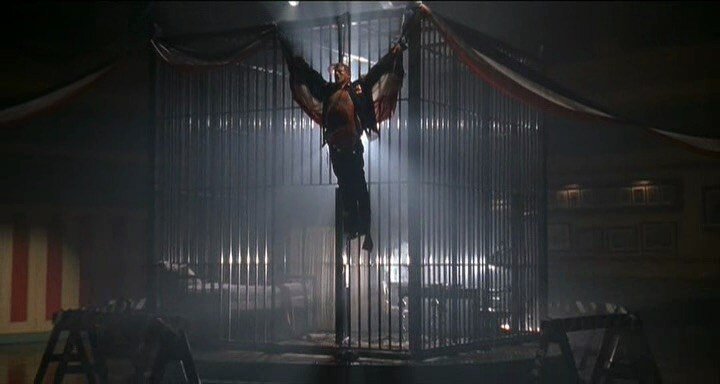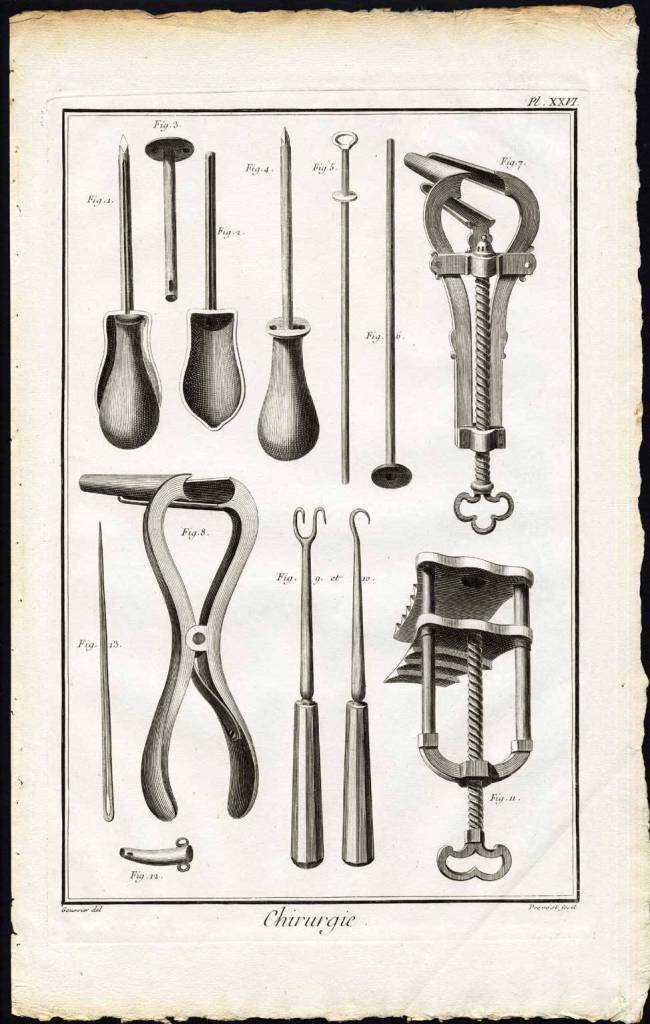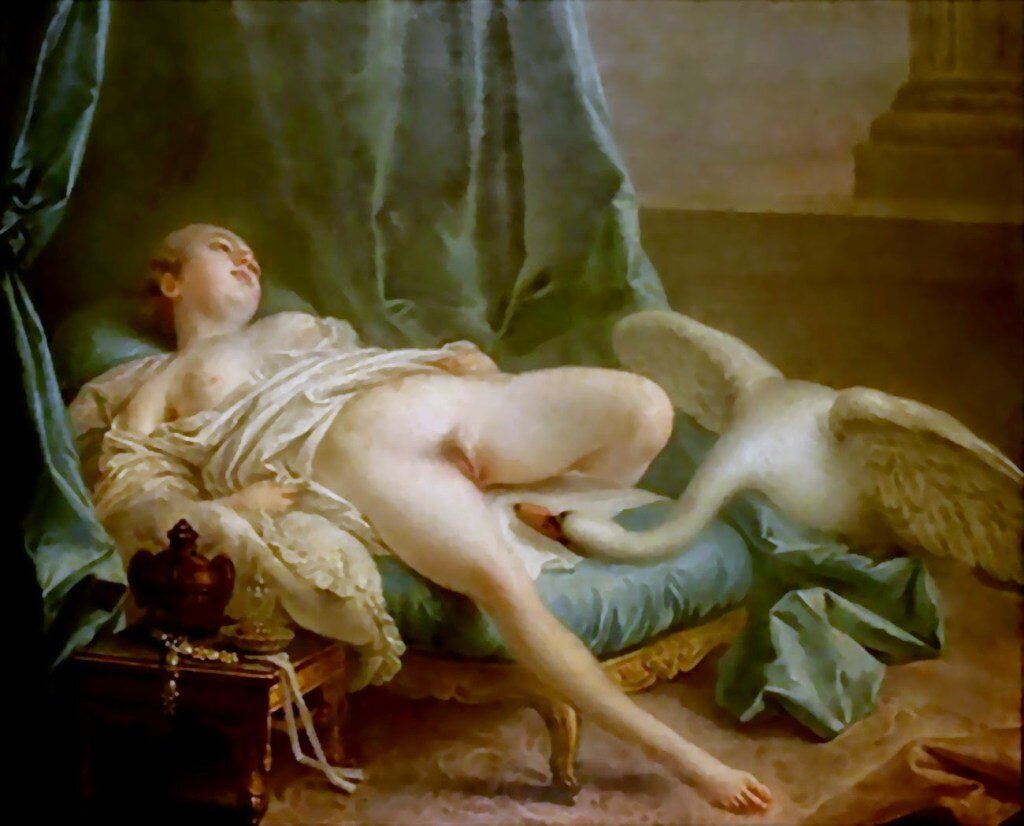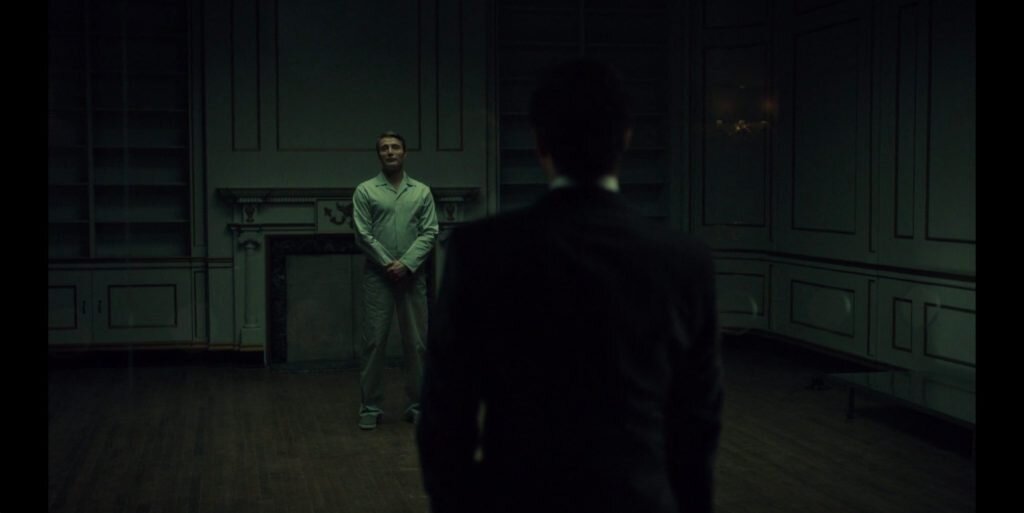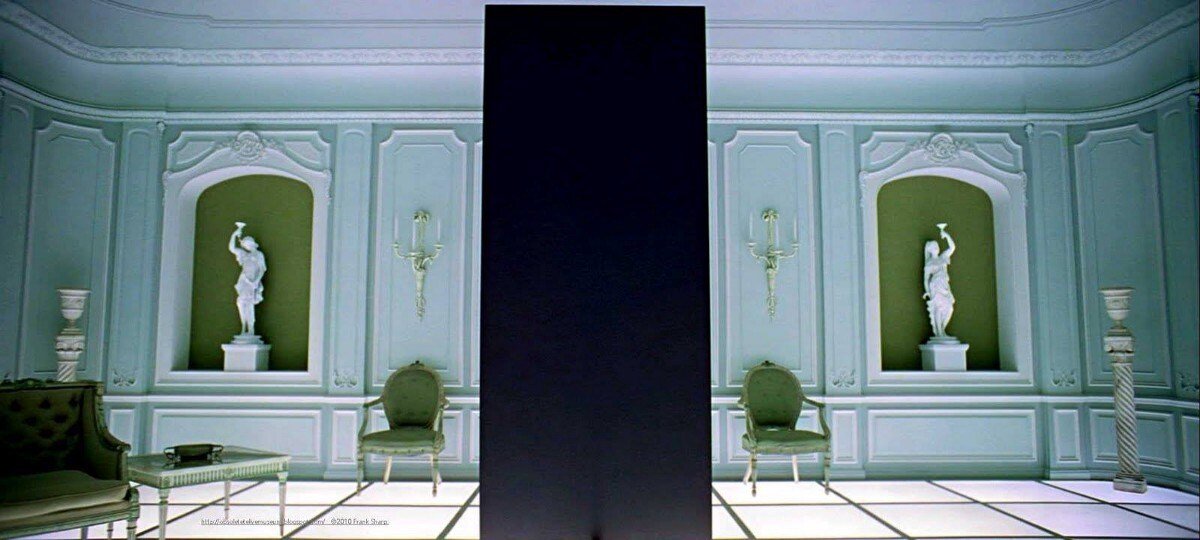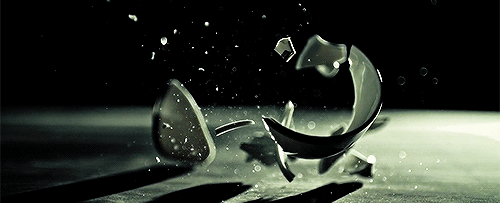Hannibal’s Intertextual Gothic Feast
Although wrapped around (though often repurposing) Thomas Harris’s source material, literary tradition absolutely steers the aesthetic of Bryan Fuller’s Hannibal, which ran three seasons and was consistently marked by a production design that was oriented around sublimity. The sets create complex intertextual references that both ground the show as Gothic while also pulling from what Anthony Vidler calls “the subgenres of the sublime–the grotesque, the caricature, the fairy story, the melodrama, the ghostly romance, and the horror story” (20). Hannibal would be a wholly different show without its bevy of allusions, not least of all because of how the show frames the character of Hannibal Lecter. Lecter is a highly educated and extensively read aesthete who frames himself and his “work” as part of a grand artistic tradition. This, too, is part of how the show Hannibal crafts its own aesthetic; it is based on a series of novels that are, to be honest, lurid and stiltedly written. It’s also a show firmly rooted within the horror genre—it was often quite shocking the amount of gore Fuller was able to get away with on network TV. But the show cleverly overlays this intense gore with heightened allusions to art and high culture, wrapping every blood spatter, organ theft, and mushroom-covered corpse in the trappings of a 40-minute art film each week. The show becomes an imbricated amalgam of references to film, art, literature, myth, and, always, to horror.
Generally speaking, the show borrows themes, motifs, relationship templates, and aesthetics with Gothic literature; as Evan Hayles Gledhill points out, the show is particularly influenced by Charlotte Bronte’s Jayne Eyre and William Godwin’s Caleb Williams (75). Other Gothic touches manifest in various ways, including Daphne DuMaurer’s Rebecca (as well as the Hitchock film adaptation), Wilkie Collins’ The Woman in White, and season three bears certain influences from Bram Stoker’s Dracula and Ann Radcliffe’s Mysteries of Udolfo.
“Coquilles”
Episode 1.05
Specific episodes or pieces of set dressings have their own traceable provenance. For example, the Season One episode “Coquilles” (1.05) features a killer-of-the-week whose modus operandi is to flay the skin from his victims’ backs to form it into angel wings; this frustrates the divide between the lurid appeal of gore and the creation of high art, but it also allows Fuller to include an intertextual visual reference to the film Silence of the Lambs. This play with genre and the relentless simultaneity of Fuller’s Gore and Art foregrounds the enmeshed nature of the show’s intertexual positioning.
Silence of the Lambs
dir. Jonathan Demme
Lecter’s therapist and part co-conspirator, part temporary paramour, Bedelia DuMaurier—whose name itself explicitly invokes the novel Rebecca—tells Hannibal, “You no longer have ethical concerns, Hannibal; you only have aesthetical ones.” The obsessive production design of the show makes this argument as well, enveloping both Lecter’s home and office as well as the murders he commits in references to literature, myth, and classical art. In Lecter’s office, the walls feature art that draws from science, history, and literature. At the top of his library ladder, a plate of The Peculiarities of the Ear by French criminologist Alphonse Bertillon—inventor of the modern mugshot—is featured. The wall underneath features an engraving that depicts Act V, Scene III of Shakespeare’s Coriolanus by Gavin Hamilton, as well as a 1916 photo of an operating theatre that features Vincenz Czerny, a German surgeon who developed the first operations for the removal of cancerous tissue as well as advanced surgical approaches to gynecology and the correction of hernias. Behind Lecter’s desk hang prints featuring surgical instruments from the Encyclopedia or a Systematic Dictionary of the Sciences, Arts and Crafts, circa 1772—prints that perhaps foreshadow his curation of historical torture devices in Season Three.
His dramatic dining room features a “living wall” with a continuous wallpaper print that reproduces a 1907 etching by Oliver Grosch called Woods Reflected in a Pond. Above the dining room’s fireplace, in true Hannibal excessive fashion, is François Boucher’s version of Leda and the Swan—which, interestingly, is one of the few details that is obscured in the Amazon streaming version of the show.
Leda and the Swan
by Francois Boucher
Outside Lecter’s home, we are still inundated with art and allusions to art. In Season One’s “Roti” (1.11), committed psychopath Dr. Abel Gideon impales a nurse with numerous instruments, alluding to the medieval representation of the “Wound Man,” a depiction of which is also seen in the sketches of Lecter by the missing FBI trainee Miriam Lass (“Entrée” 1.06). In Season Three, in Florence, we learn that Lecter’s early “work” was an homage to Botticelli’s Primavera, which Lecter spent time in Florence repeatedly sketching at the Uffizi Gallery.
Perhaps most improbably, after his surrender, Lecter’s cell at the Baltimore Hospital for the Criminally Insane is powerfully indebted to the room that houses the obelisk in the end of Stanley Kubrick’s 2001: A Space Odyssey:
Apart from these visual allusions, the show’s references to literature abound; whether it’s Greek myth, fairy tales, or modern science texts, the dialogue is wrapped in multiple layers of meaning through the intertextual matrix. In Season 3, Lecter spends time as a curator at the Capponi Library in Florence, impersonating Dr. Roman Fell and casually delivering lectures to the cognoscenti about Dante’s work. Lecter’s obsession with the metaphor of the teacup, repeated throughout the series, is a reference to both Stephen Hawking’s A Brief History of Time as well as to Harris’s novel Hannibal, where he becomes obsessed with Hawking’s work. He confides in Will at one point, “Occasionally, I drop a teacup to shatter on the floor. On purpose. I’m not satisfied when it doesn’t gather itself up again… Someday perhaps, a cup will come together” (“Kō No Mono”2.11). In the Season Two finale, immediately after (lovingly, intimately) stabbing Will, Lecter tells him, “The teacup I shattered did come together” (“Mizumono” 2.13). In addition to the Hawking reference, it’s worth noting as well that the abstracted music playing in this scene is a rendition of Bach’s “Goldberg Variations,” written for harpsichord—the instrument Lecter plays—and which features prominently in the film Silence of the Lambs. Nonetheless, Lecter’s return time and again to the image of the shattering teacup is a meditation on entropy, the fixed nature of fate, and the inescapability of consequences, all themes which thread throughout the show.
Taken altogether, it is these constant touches that ground Hannibal in a rich intertextual literary tradition highly based in the Gothic and neo-Gothic. As Roland Barthes argues in Image-Music-Text, “the Text is plural,” and he reminds us that “etymologically, the text is a tissue, a woven fabric” that constructs its meaning through the “stereographic plurality” of its signifiers (159). Fuller’s play with genre and the inherent tension between the elevated art of the literary and the “low” nature of horror illustrates the power of a polysemous show that, in the hands of careful creators, can concurrently integrate pulpy source texts, Italian renaissance art, foundational scientific theorems, and artfully deployed blood and viscera.
Works Cited
Fuller, Bryan, creator. Hannibal. Gaumont Productions, 2013-15.
Gledhill, Evan Hayles. Monstrous Masculinities in Gothic Romance: Will Graham, Jayne Eyre, and Caleb Williams.” Becoming: Genre, Queerness, and Transformation in NBC’s Hannibal, edited by Kavita Mudan Finn and EJ Nielsen, Syracuse UP, 2019, pp. 74-95.
McLean, Jess. The Art and Making of Hannibal. Titan Books, 2015.
Vidler, Anthony. “Unhomely Houses.” The Architectural Uncanny: Essays in the Modern Unhomely, MIT Press, 1994, pp. 17-44.

